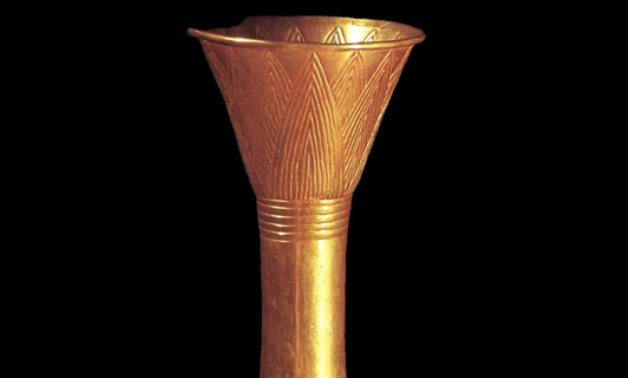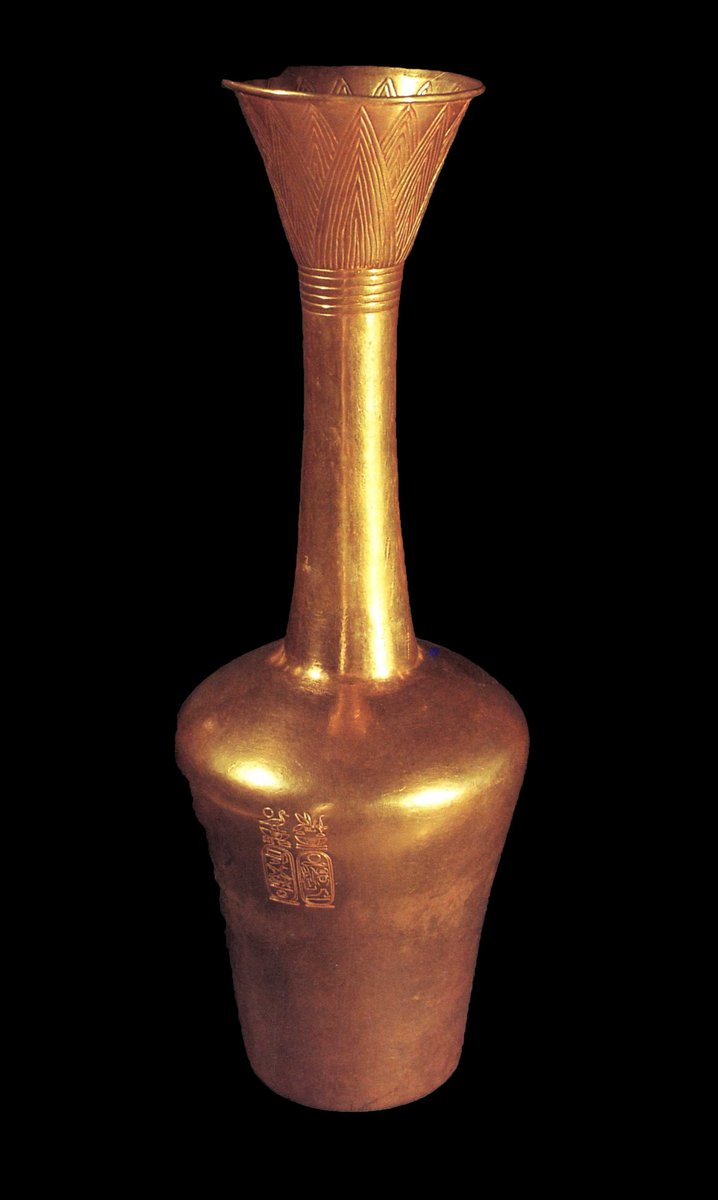
A lotus flower vase belonging to King Psusennes I housed in Egyptian Museum in Tahrir - social media
CAIRO – 24 November 2022: For ancient Egyptians, the lotus was one of the most prominent religious symbols, as it resembled beauty, life and resurrection.
Many of the ancient Egyptian artifacts were made in the form of a lotus flower. Among these pieces is a vase belonging to King Psusennes I, which is displayed in the Egyptian Museum in Tahrir.

This vessel, which dates back to the 21st Dynasty - the Third Intermediate Period, was found in Tanis – Al-Sharqiyah Governorate, and is 38 cm in height.
The Third Intermediate Period of ancient Egypt was generally defined as a period of decentralization and weakness. By the end of his reign, Ramesses the Eleventh (1099-1069 BC) - the last king of the New Kingdom - was no longer the de facto ruler of all of Egypt. After his death, a branch of the Ramessides took Tanis, [now San el-Hagar], in the northeast of the Delta, as their capital.
Although the reign of these kings who made up the 21st Dynasty [1069-945 BC] was recognized throughout the country, Upper Egypt was in fact under independent rule in the hands of the High Priest of Amun in Luxor, who at the same time held the highest military position. Historians describe this period as a theocracy, because the priests of the Lord Amun assumed more authority than the king.
Shoshenq I, the founder of the 22nd Dynasty [around 945-715 BC], came from a powerful Libyan family of Bubastis, [present-day Tell el-Basta] in the eastern Delta, which he made as his capital.
Shoshenq I succeeded in bringing the country under his control, and carried out successful military campaigns in the east, the region of Palestine, Lebanon and Syria. He also carried out huge construction projects. Unfortunately, this short-term success could not keep up with the general trend of decentralization that prevailed in Egypt. After his death, the central government's control over the country began to decline.
By the time of the 23rd Dynasty, many regions were not only completely independent, but their rulers actually considered themselves kings, wearing royal insignia and bearing royal titles.
During that period, the Kushite Nubian kingdom, centered around Napata near the Fourth Cataract, was rising until it began to invade Egypt. In the end, the 25th Nubian Dynasty occupied the country until it reached Memphis under the rule of King Bay (747-716 BC), to whom the rest of the kings of the family attribute themselves.
Great prosperity prevailed in this era, as art and architecture flourished, and many great facilities were built.
Comments
Leave a Comment